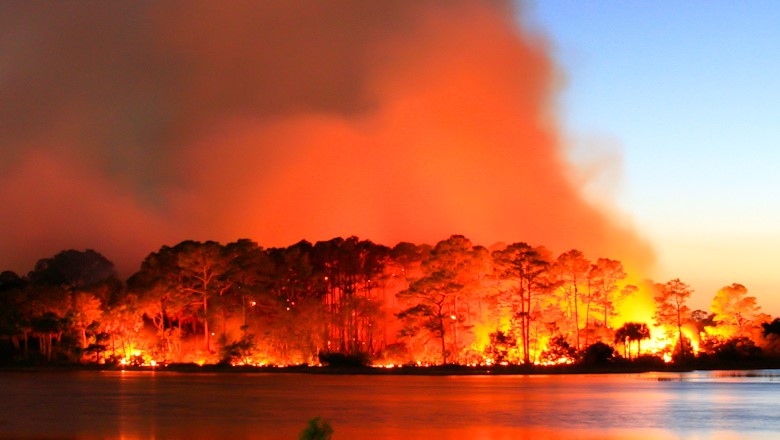
The Florida Division of Emergency Management has assemble a plan Florida disasters
While living in Florida offers many benefits and advantages, it is important to keep in mind severe weather hazards and potential threats. Every family and business should have predefined emergency plans and always keep an emergency supply kit ready and stocked.
A disaster can strike at any time – sometimes without warning. It is important for every Floridian, especially citizens with disabilities and other special needs, to plan ahead for an emergency situation and know what to do in the event of an emergency.
Get A Family Plan
Make a plan today. Your family may not be together if a disaster strikes, so it is important to know which types of disasters could affect your area. Know how you’ll contact one another and reconnect if separated. Establish a family meeting place that’s familiar and easy to find.
Step 1: Put together a plan by discussing these 4 questions with your family, friends, or household to start your emergency plan.
- How will I receive emergency alerts and warnings?
- What is my shelter plan?
- What is my evacuation route?
- What is my family/household communication plan?
Step 2: Consider specific needs in your household.
As you prepare your plan tailor your plans and supplies to your specific daily living needs and responsibilities. Discuss your needs and responsibilities and how people in the network can assist each other with communication, care of children, business, pets, or specific needs like the operation of durable medical equipment. Create your own personal network for specific areas where you need assistance.
Step 3: Create an Emergency Plan
You can download a America’s PrepareAthon template plan
Step 4: Practice your plan with your family/household
Planning for Your Home
Retrofitting Your Home, The most important precaution you can take to reduce damage to your home and property is to protect the areas where wind can enter. According to recent wind technology research, it’s important to strengthen the exterior of your house so wind and debris do not tear large openings in it. You can do this by protecting and reinforcing these five critical areas:
ROOF | STRAPS | WINDOWS | DOORS | GARAGE DOORS
A great time to start securing – or retrofitting – your house is when you are making other improvements or adding an addition. Remember: building codes reflect the lessons experts have learned from past catastrophes. Contact the local building code official to find out what requirements are necessary for your home improvement projects.
Disaster Supply Kit
Water – at least 1 gallon daily per person for 3 to 7 days
Food – at least enough for 3 to 7 days
- non-perishable packaged or canned food / juices
- foods for infants or the elderly
- snack foods
- non-electric can opener
- cooking tools / fuel
- paper plates / plastic utensils
Blankets / Pillows, etc.
Clothing – seasonal / rain gear/ sturdy shoes
First Aid Kit / Medicines / Prescription Drugs
Special Items – for babies and the elderly
Toiletries – hygiene items
Moisture wipes
Flashlight / Batteries
Radio – Battery operated and NOAA weather radio
Cash – Banks and ATMs may not be open or available for extended periods.
Keys
Toys, Books and Games
Important documents – in a waterproof container
- insurance, medical records, bank account numbers, Social Security card, etc.
- document all valuables with videotape if possible
Tools – keep a set with you during the storm
Vehicle fuel tanks filled
Pet care items
- proper identification / immunization records
- ample supply of food and water
- a carrier or cage
- medications
- muzzle and leash
Have a Place to Go
Develop a family hurricane preparedness plan before an actual storm threatens your area. If your family hurricane preparedness plan includes evacuation to a safer location for any of the reasons specified with in this web site, then it is important to consider the following points:
If ordered to evacuate, do not wait or delay your departure.
If possible, leave before local officials issue an evacuation order for your area. Even a slight delay in starting your evacuation will result in significantly longer travel times as traffic congestion worsens.
Select an evacuation destination that is nearest to your home, preferably in the same county, or at least minimize the distance over which you must travel in order to reach your intended shelter location.
In choosing your destination, keep in mind that the hotels and other sheltering options in most inland metropolitan areas are likely to be filled very quickly in a large, multi-county hurricane evacuation event.
If you decide to evacuate to another county or region, be prepared to wait in traffic.
The large number of people in this state who must evacuate during a hurricane will probably cause massive delays and major congestion along most designated evacuation routes; the larger the storm, the greater the probability of traffic jams and extended travel times.
If possible, make arrangements to stay with the friend or relative who resides closest to your home and who will not have to evacuate. Discuss with your intended host the details of your family evacuation plan well before the beginning of the hurricane season.
If a hotel or motel is your final intended destination during an evacuation, make reservations before you leave. Most hotel and motels will fill quickly once evacuations begin. The longer you wait to make reservations, even if an official evacuation order has not been issued for your area or county, the less likely you are to find hotel/motel room vacancies, especially along interstate highways and in major metropolitan areas.
If you are unable to stay with friends or family and no hotels/motels rooms are available, then as a last resort go to a shelter. Remember, shelters are not designed for comfort and do not usually accept pets.
Make sure that you fill up your car with gas, before you leave.
Have a Pet Plan
The best way to protect your family from the effects of a disaster is to have a disaster plan. If you are a pet owner, that plan must include your pets. Being prepared can save their lives.
If you evacuate your home, DO NOT LEAVE YOUR PETS BEHIND! Pets most likely cannot survive on their own; and if by some remote chance they do, you may not be able to find them when you return.
Have a Safe Place to Take Your Pets
Service animals who assist people with disabilities are allowed in Red Cross shelters. It may be difficult, to find shelter for your animals in the midst of a disaster, so plan ahead. Do not wait until disaster strikes to do your research. Many communities are developing pet friendly shelter plans, check to see if your local emergency shelter plan include pets.
- Contact hotels and motels outside your immediate area to check policies on accepting pets and restrictions on number, size, and species. Ask if “no pet” policies could be waived in an emergency. Keep a list of “pet friendly” places, including phone numbers, with other disaster information and supplies. If you have notice of an impending disaster, call ahead for reservations. Go to Pet’s Welcome to search online for pet friendly hotels and motels.
- Ask friends, relatives, or others outside the affected area whether they could shelter your animals. If you have more than one pet, they may be more comfortable if kept together, but be prepared to house them separately.
- Prepare a list of boarding facilities and veterinarians who could shelter animals in an emergency; include 24-hour phone numbers.
- Ask local animal shelters if they provide emergency shelter or foster care for pets in a disaster. Animal shelters may be overburdened caring for the animals they already have as well as those displaced by a disaster, so this should be your last resort.
Assemble a Portable Pet Disaster Supplies Kit
Whether you are away from home for a day or a week, you’ll need essential supplies. Keep items in an accessible place and store them in sturdy containers that can be carried easily (duffle bags, covered trash containers, etc.). Your pet disaster supplies kit should include:
- Medications and medical records (stored in a waterproof container) and a first aid kit.
- Sturdy leashes, harnesses, and/or carriers to transport pets safely and ensure that your animals can’t escape.
- Current photos of your pets in case they get lost.
- Food, potable water, bowls, cat litter/pan, and can opener.
- Information on feeding schedules, medical conditions, behavior problems, and the name and number of your veterinarian in case you have to foster or board your pets.
- Pet beds and toys, if easily transportable.
Know What To Do As a Disaster Approaches
You may not be home when the evacuation order comes. Find out if a trusted neighbor would be willing to take your pets and meet you at a prearranged location. This person should be comfortable with your pets, know where your animals are likely to be, know where your pet disaster supplies kit is kept, and have a key to your home. If you use a petsitting service, they may be available to help, but discuss the possibility well in advance.
Planning and preparation will enable you to evacuate with your pets quickly and safely. But bear in mind that animals react differently under stress. Outside your home and in the car, keep dogs securely leashed. Transport cats in carriers. Don’t leave animals unattended anywhere they can run off. The most trustworthy pets may panic, hide, try to escape, or even bite or scratch. And, when you return home, give your pets time to settle back into their routines. Consult your veterinarian if any behavior problems persist.



